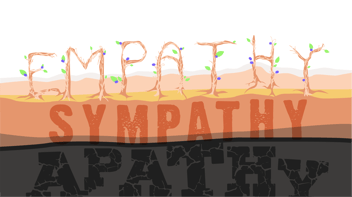
Do you have outdated applications, or legacy applications?
First, let’s talk about the difference between ‘outdated’ and ‘legacy’ applications. Outdated applications are just that—they need to be replaced because they no longer serve their purpose to the standard required and expected by today’s technology and users.
Legacy applications are outdated applications, plus extra baggage. They are technically outdated, and should be modernized, but we’ve attached perceptions to them that block modernization. Primarily, the baggage consists of the belief that our business could not run without the legacy program. Also, we are still attached to the expensive initial investment that we made, X-number of years ago.
Traditionally, business leaders stretch out capital investments for as long as possible. The perception has been that the more time we can get out of a technology investment, the greater the value to the company. The speed and capabilities of newer technologies have dismantled that rationale—but many businesses still cling to the model of value realized over time. Modernizing legacy technology supports a new model of value realized through greater capabilities and outcomes. Which model is more likely to grow your business in the modern digital-focused economy?
The business risks of putting off modernization are in today’s headlines
When we talk about modernizing legacy applications, we are talking about augmenting or replacing your existing applications to an operational and maintainable standard to support your current and future business needs. The fact is, your legacy technology was just not built for a far-enough future state. But that future state isn’t tomorrow—it’s now.
Postponing legacy modernization is no longer a business risk you can afford to take—because social distancing has swiftly become our new reality. It is something that your business probably wasn’t built for— not your teams, your tech, or your customers. Modernizing your legacy applications now will help your business survive the sudden age of social distancing—because it’s not going away anytime soon.
What happens if you don’t modernize your legacy applications?
Over time, the business value from your outdated technology starts to degrade. Legacy application house the backbone of many organizations, but are holding you back in many ways—
- Lack of agility—applications cannot keep up with changing business needs, such as the sudden need for social distancing
- Increased operating and maintenance costs—delaying modernization only amplifies this expense
- Incompatibility with modern technology—whether that is enabling remote working or mobile workforce in the field
The bottom line is that maintaining legacy applications makes it hard to break free from yesterday's problems and focus on the future. Legacy apps keep your teams fully occupied keeping the old system running. Fixing an issue will always take priority over adding new features or functionality. Your business will struggle to innovate and compete in the digital-first landscape.
Invest in optimizing your legacy tech for change—since change is the only thing you can count on now
In an era where change is the only constant, creating new products, services, and experiences is a baseline expectation for your business to compete and thrive. Modernizing legacy apps gives your business the capability to adapt quickly and—in the era of social distancing— survive.
At Softway, we understand that we can’t just rip out a legacy application, and we would never recommend that. You may have run across terms like re-platforming, re-hosting, re-coding, re-factoring, re-architecting, re-building, or replace-and-retire as viable solutions. They may all seem like solutions in theory, but every legacy application will have unique challenges that hinder a standardized, off-the-shelf solution.
Here are some steps to get you started on the modernization path—
Application assessment: Create an application inventory. Then, conduct an analysis of the purposes and uses of each application, across the business. What are the current pain points? Bonus points if you are able to collect a wish list of features and functions.
Solutioning: This is a step that aligns the vision and practical application of the solution. At Softway, depending on the results of our assessment phase, we may recommend one of three paths—
- Replace the legacy system. The least common path, applicable to smaller systems. Here’s where we would do re-platforming, re-hosting, re-coding, re-factoring, re-architecting, re-building, replace-and-retire.
- Transition. Most legacy systems cannot be replaced entirely as a whole—they need to be transitioned, so there might be a period of time where the legacy system is still being used while the new application is being created. This allows your business to continue using the current legacy system to fulfill business operations. New features are gradually replaced in the old system by the new application.
- Augmentation. In some scenarios, legacy applications cannot be completely replaced or even partially replaced. In this situation, the underlying data and the underlying structure is still managed and maintained within the legacy application. A separate, new application is created to take its place for the end-users, using APIs and microservices to connect the end-users to the legacy system. This is not a complete replacement of a legacy application—but it can be an effective solution to bring some modernization benefits like improved productivity and reduced costs, while enabling agility for changing business conditions.
Modularized Architecture: As we look at technical solutions and define the architecture, it is important to modularize the application. Breaking the system into smaller, modular pieces makes them easier to build, deploy, and manage. Proper modularization and good maintenance practices can prevent your investment from turning into a legacy system down the road.
Extract business rules: Over the years, most legacy systems have some documented and lots of undocumented business rules. These business rules usually are distributed knowledge across business units. During the solutioning phase, it is important to consider capturing these business rules and their relevance of use, as they apply currently and for the future. This avoids issues of lost capabilities during upgrades.
For best results, modernize your legacy applications through the lens of humanity
Technology shapes our human experiences, so we believe humans should shape our technology. At Softway, our core strategy is to look at building applications through a human lens.
Whether modernizing legacy applications or creating brand-new cloud solutions, we always start with how humans will be affected by the tech we’re making. Not only how they will interact with screens and workflows, but also the environmental conditions and connectivity challenges they could encounter while using the technology. We factor in issues that may not have anything to do with the application itself, but will definitely impact the humans relying on it. When we build through our humans-first approach, business value and longevity are extended. Which is good for your business, and your people.




